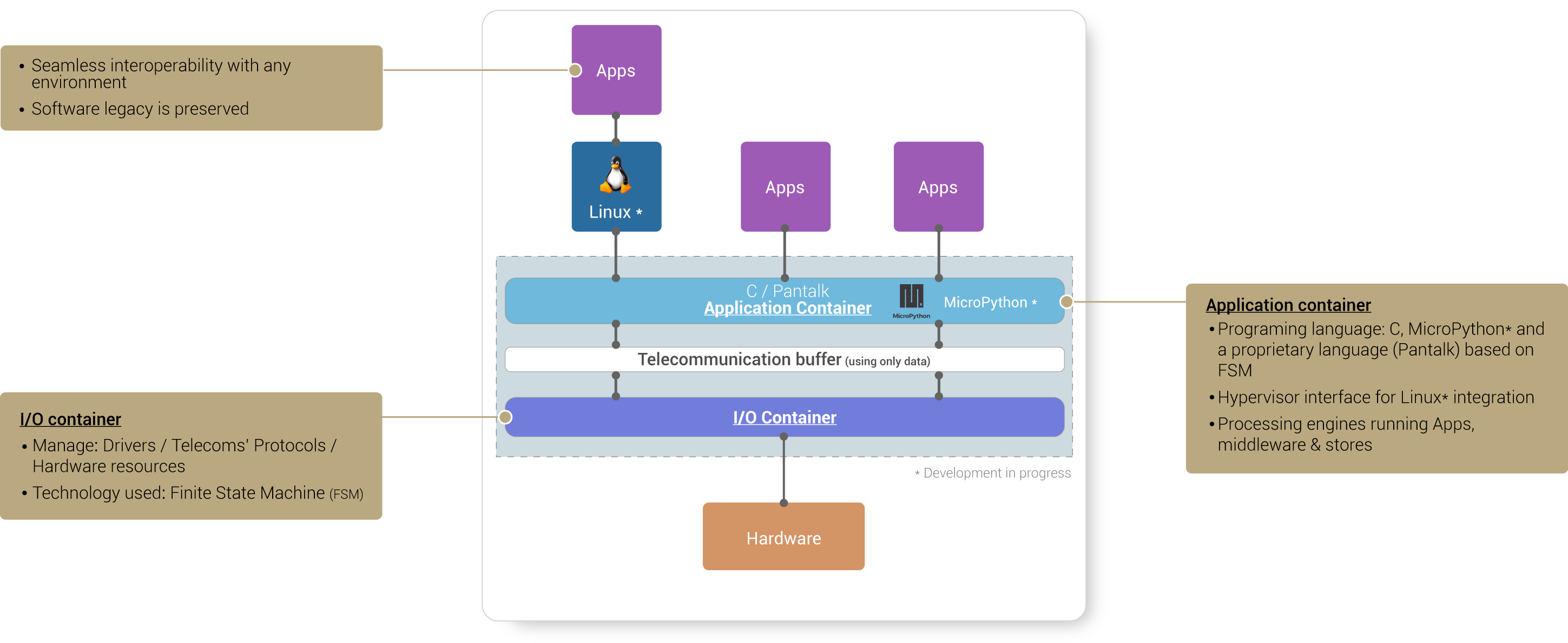HPL/OS Groundbreaking Architecture

HPL/OS Key Features
Greener by design
HPL/OS dramatically reduces equipment power consumption through optimized use of RAM: the code can be run from the FLASH memory which does not consume energy when not used. Less RAM also means fewer rare earths needed per equipment.
Real time & General Purpose
At Hyperpanel, we have succeeded in implementing Finite State Machines (FSM) technology executed by an FSM engine. Thanks to this technology, HPL/OS gives the possibility to manage in the same time and in the same equipment human applications and real time applications.
Bare metal hypervisor
HPL/OS can be seen as part of the hardware by any hosted OS while providing its benefits in terms of drivers, protocols and hardware services. Therefore, using HPL/OS guarantees the legacy of any software investments already done.
Language & hardware agnostic
HPL/OS ability to be both GPOS and RTOS allows it to interface locally with all types of electronic devices. HPL/OS can then perform two main functions: replace the cloud in case of access failure and / or locally execute any features that do not require access to the cloud.
100% proprietary solution
HPL/OS has been entirely designed, developed and tested in house, without any third-party code. HPL/OS also includes a boot and a loader fully developed internally. All of our codes are fully tested through unitary tests which are embedded in the documentation. This documentation, fully detailed, is built-in the code and accessible via a web page.
High scalability
The use of FSM technology allows HPL/OS to be totally modular with a very low execution footprint. Similarly, its ability to run from FLASH memory allows HPL/OS to use very little RAM. This makes HPL/OS able to run on a footprint down to 40 Mhz processor, 150 KB Flash and 80 KB RAM.
M2M by resource sharing
Thanks to its architecture in 2 containers whose exchanges are made through a data telecommunication buffer, HPL/OS can be deployed on several electronic devices. This set of equipments is therefore seen as a single equipment powered by a multi-core processor, allowing the pooling of all its hardware resources.
Edge computing
HPL/OS embeds a generic interpreter that allows to integrate all types of interpreted languages (JavaScript, MicroPython, etc.). HPL/OS is written in C language and therefore portable on all types of processors with a C compiler.
